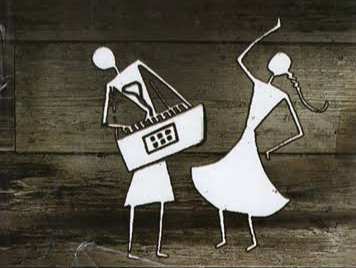In the vibrant tapestry of Bengali folk culture, few traditions are as colorful, clever, and captivating as Alkap. Originating in the rural heartlands of Bengal, this folk performance art blends satire, music, dance, and drama into a night-long spectacle that’s as entertaining as it is socially conscious.
Whether you’re a culture enthusiast or just discovering Bengali folk traditions, Alkap offers a glimpse into the humor, hardships, and hopes of rural life — all wrapped in rhythm and laughter.
What is Alkap?
Alkap is a traditional Bengali folk theatre that combines performance and parody. It’s a live show, typically performed by a group of men (called a Dal), and is especially popular in parts of Malda, Murshidabad, Rajshahi, Chapainawabganj, and the surrounding border areas of India and Bangladesh.
The name Alkap itself comes from:
- "Al" meaning group or troupe
- "Kap" which refers to a satirical or mocking tone
So, Alkap is quite literally a “group that mocks” — but it does so with deep cultural flavor and purpose.
Structure of an Alkap Performance
An Alkap show is typically performed overnight during local festivals, harvest celebrations, or village gatherings. The performance is a mix of several elements:
- Kheur or Kap SongsWitty, rhythmic songs full of social satire, innuendo, and humor — often improvised.
- Dialogue & SkitsThese short plays or sketches use parody and local dialects to expose issues like political corruption, family conflicts, dowry, or superstition.
- Dance PerformancesPerformed by male dancers, often cross-dressed as women (Nachni), portraying both comedic and emotional roles.
- Narration & MusicA Sutradhar (narrator) ties the segments together, while traditional instruments like dhol, dotara, harmonium, and flute accompany the show.
Main Characters in Alkap
An Alkap troupe usually includes:
- Sarkar – The leader of the troupe
- Bayati – The narrator or commentator
- Nachni – The dancer (often played by men)
- Chhokra – The supporting comic relief
- Musicians – Keeping the rhythm and emotion alive
Each has a specific role that blends performance with social commentary.
The Message Behind the Laughter
Alkap isn’t just for fun — it has layers of meaning:
- Raises awareness about social issues
- Critiques politics and religion with sharp wit
- Preserves local language and humor
- Brings the community together
In villages where literacy is low, Alkap served (and still serves) as a kind of people’s theatre, making the audience laugh while making them think.
Alkap in the Modern Age
Today, with the rise of digital entertainment, Alkap has lost much of its mainstream audience. However, it survives through:
- Cultural festivals
- Government-sponsored folk programs
- Documentation by cultural researchers
- YouTube channels and local content creators
Young performers in rural areas are also trying to revive it with a modern twist — adding new topics and formats while keeping the soul of Alkap intact.
